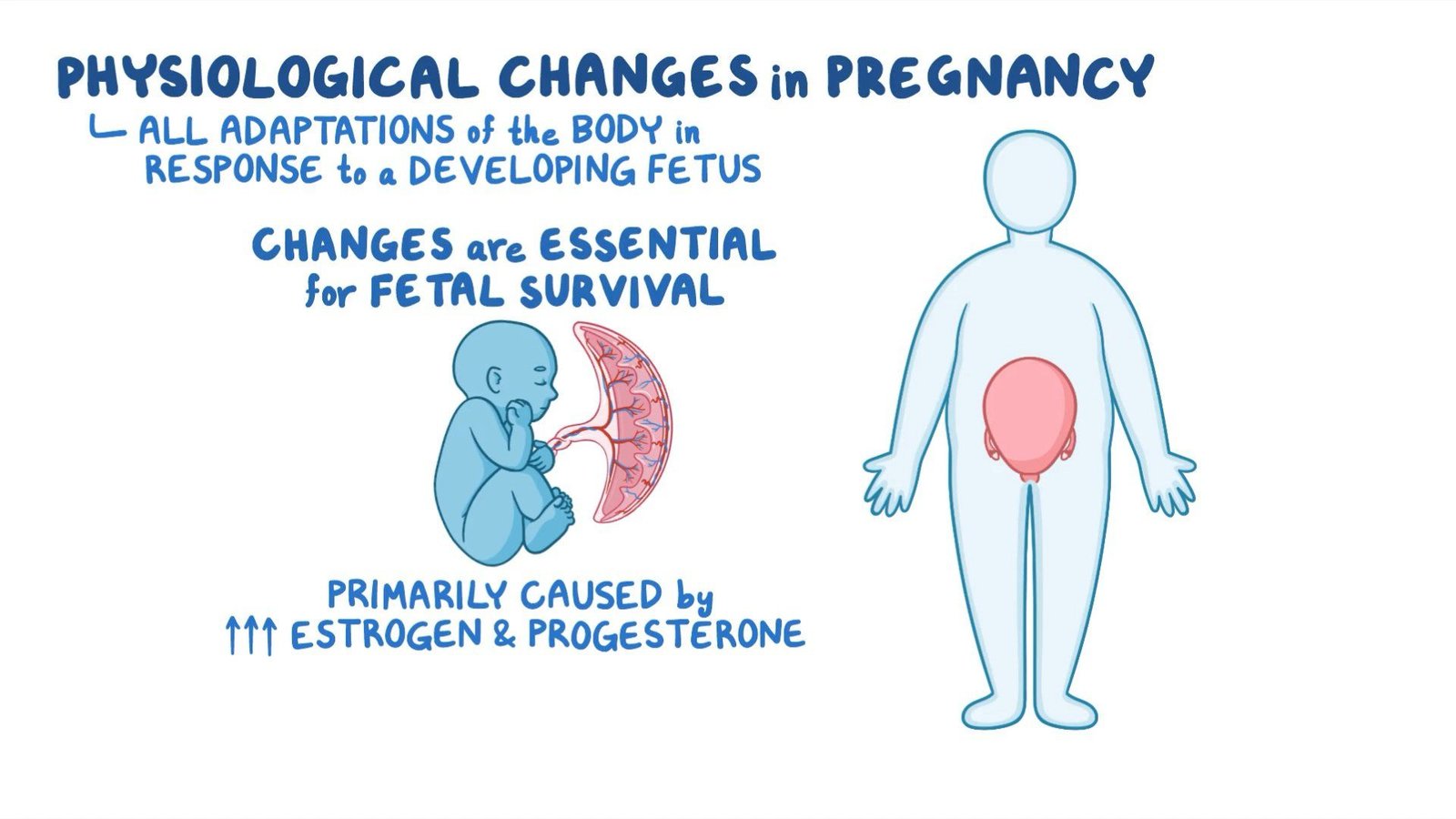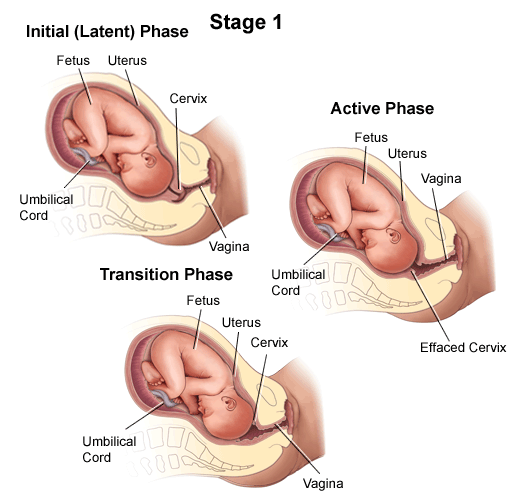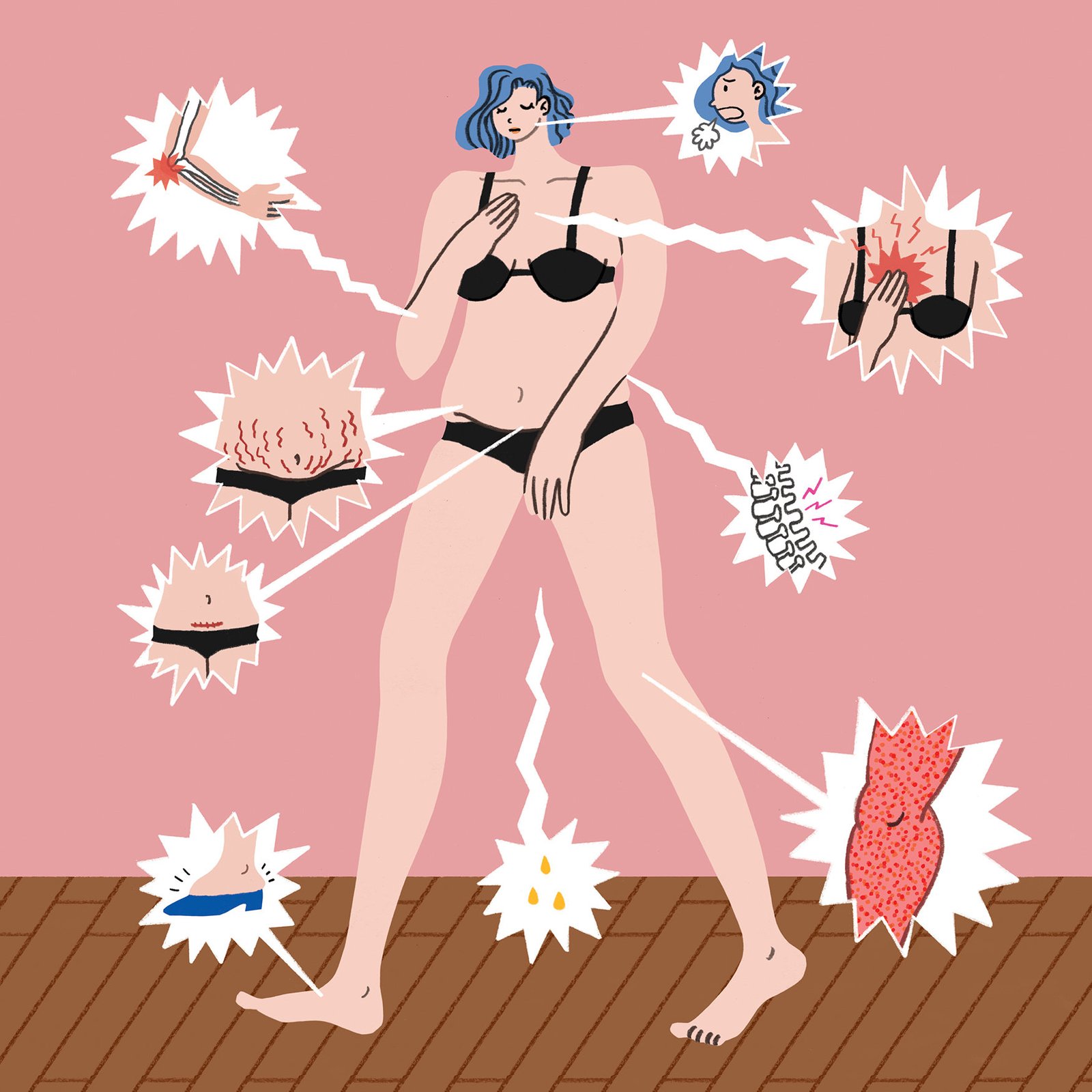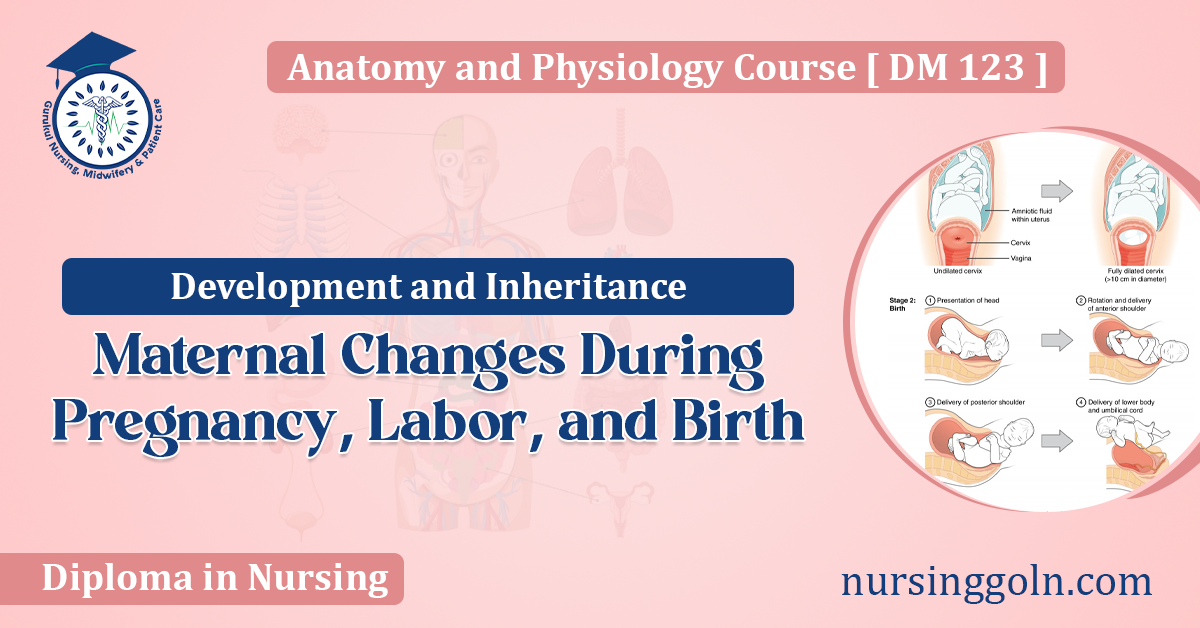Today our topic of discussion is ” Maternal Changes During Pregnancy, Labor, and Birth “. Pregnancy is a miraculous journey that marks the beginning of a new life. It is a time of profound physical and emotional changes as a woman’s body prepares to create, nurture, and eventually give birth to another human being.
This process is not just about the development of a fetus, but also about the preparation of the mother’s body for labor and birth. Understanding the maternal changes during these stages is crucial for expectant mothers and their families to appreciate the complexities of development and inheritance.
Maternal Changes During Pregnancy, Labor, and Birth : Development and Inheritance
Maternal Changes During Pregnancy
Pregnancy is divided into three trimesters, each with its own set of changes and developments.
First Trimester (Weeks 1 to 12)
The first trimester is a period of rapid development for the fetus and significant changes for the mother. Hormonal changes are profound, particularly the increase in human chorionic gonadotropin (hCG), estrogen, and progesterone. These hormones play crucial roles in maintaining the pregnancy and preparing the woman’s body for the growth of the fetus.
One of the earliest changes is the cessation of the menstrual cycle. The lining of the uterus thickens to provide support for the developing embryo. The increase in hormone levels can cause several symptoms, including nausea (commonly known as morning sickness), fatigue, and mood swings. The breasts begin to change, becoming larger, and more tender, and the areolae darken due to hormonal influences.
Internally, the cardiovascular system adapts to the needs of the growing fetus. There is an increase in blood volume and cardiac output to transport nutrients and oxygen to the fetus. These changes can cause the mother’s heart rate to rise and may lead to feelings of dizziness and fatigue.
Second Trimester (Weeks 13 to 26)
During the second trimester, many of the early symptoms of pregnancy, such as morning sickness, begin to subside. The mother’s abdomen starts to expand as the fetus grows. The uterus stretches, and the abdominal organs shift to accommodate the increasing size of the fetus.
The placenta, which has been developing since the embryo is implanted in the uterine wall, now takes over the role of hormone production to maintain the pregnancy. This organ is not only vital for the exchange of nutrients and wastes between mother and fetus but also for producing hormones that regulate fetal growth and prepare the mother’s breasts for lactation.

As the fetus grows, the mother’s center of gravity shifts, which can affect her posture and lead to backaches. The skin stretches, sometimes resulting in stretch marks, and there may be an increase in skin pigmentation, causing conditions like melasma (the “mask of pregnancy”).
The skeletal system adapts as the hormone relaxin loosens the ligaments in the pelvic area to facilitate birth. There may also be changes in the mother’s appetite as the caloric needs increase to support fetal development.
Third Trimester (Weeks 27 to Birth)
The third trimester is characterized by rapid fetal growth and further body changes. The fetus’s movements become more pronounced, and the mother can feel kicks and turns. The uterus expands to its maximum size, pushing against the diaphragm, which can cause shortness of breath. There is also increased pressure on the bladder, resulting in frequent urination.
The breasts continue to grow and may begin to secrete colostrum, the first form of milk produced by the mammary glands. Braxton Hicks contractions, which are false labor pains, may occur as the body begins to prepare for the actual labor process.
The mother’s body also prepares for delivery by further softening the cervix and the pelvic ligaments. The increasing size of the fetus and the uterus can put a strain on the mother’s body, leading to discomfort and mobility issues.

Labor and Birth
Labor marks the culmination of the pregnancy and the beginning of the birth process. It is divided into three stages:
First Stage: Dilation of the Cervix
Labor begins with the dilation of the cervix, which is the opening of the uterus into the vagina. Contractions become more regular and intense as they work to open and thin the cervix to allow the baby to pass through. This stage is further divided into early labor, active labor, and transition. During this time, the mother may experience back pain, abdominal cramping, and a bloody show, which is a sign that the cervix is beginning to dilate.
Second Stage: Delivery of the Baby
Once the cervix is fully dilated to 10 centimeters, the second stage of labor begins. The mother will feel a strong urge to push with each contraction. This stage ends with the birth of the baby. As the baby passes through the birth canal, the mother’s body undergoes significant strain. However, it is also a moment of intense emotional and physical release.
Third Stage: Delivery of the Placenta
The third and final stage of labor involves the delivery of the placenta, the organ that has nourished the baby throughout the pregnancy. This stage is usually the shortest and involves a few mild contractions to help detach and expel the placenta from the uterus.

Postpartum Changes
After the delivery, the mother’s body begins the process of returning to its pre-pregnancy state, a period known as the postpartum period. The uterus contracts and shrinks back to its original size over several weeks. Breastfeeding helps this process as the hormones involved in lactation also promote uterine contractions.
Hormone levels fluctuate as the body transitions from pregnancy to the postpartum state. This can affect the mother’s emotional state, leading to conditions such as the “baby blues” or postpartum depression.
The breasts undergo changes to produce milk and may become engorged and tender. Over time, the body gradually sheds the extra weight gained during pregnancy, although this process can vary greatly from one woman to another.

Conclusion
Pregnancy, labor, and birth are intense processes that bring about a multitude of changes in a mother’s body. From the initial hormonal adjustments to the final act of birth, each stage of the journey is both a testament to the body’s incredible capacity for adaptation and a prelude to the lifelong process of development and inheritance. The bond between a mother and her child is forged through these changes, reflecting the intricate dance of life that begins even before birth.
Read more:
